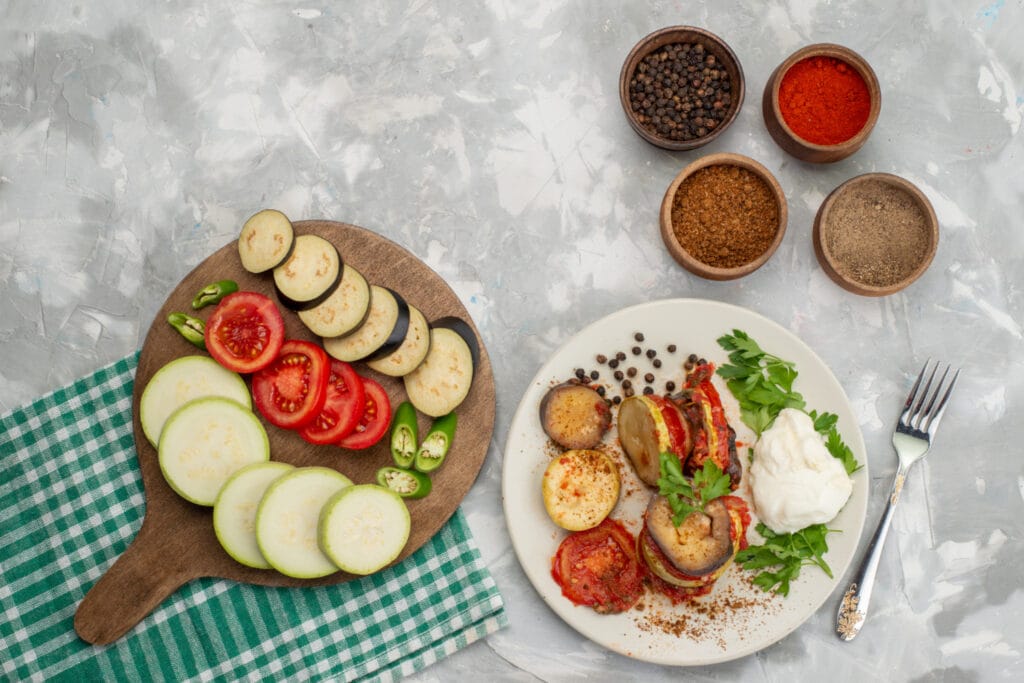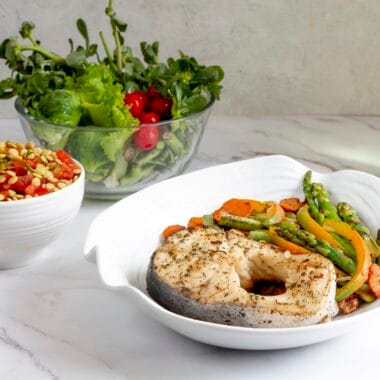
Imagine a typical weekday. The sun is shining, your child or partner is resisting yet another attempt to serve a healthy, vegetarian lunch. You’ve tried everything—brightly colored plates, fun shapes, secret ingredients—but nothing seems to win their approval. Sound familiar? You’re not alone. Many parents, caregivers, and even adults grapple with the challenge of providing nutritious vegetarian meals that appeal to selective eaters.
But fear not! With a little creativity, strategic planning, and understanding of picky eaters’ preferences, you can turn lunchtime into a delightful experience that nourishes both the body and the palate. In this comprehensive guide, we’ll explore everything from understanding picky eating behaviors to practical, delicious vegetarian lunch ideas that are sure to win over even the most stubborn eaters.
Understanding Picky Eaters: Why Do Some Kids and Adults Say No?
Before jumping into meal ideas, it’s helpful to understand what makes someone a picky eater. According to pediatric nutrition experts, picky eating can stem from various factors such as sensory sensitivities, texture aversions, or simply a desire for familiarity. Sometimes, it’s a phase, while other times, it reflects deeper sensory processing differences, like those seen in children with autism spectrum disorder (ASD).
Research from the American Academy of Pediatrics emphasizes that patience and repeated exposure are key in gradually expanding a picky eater’s palate. Moreover, understanding that taste preferences are highly individual—rooted in genetics, early experiences, and cultural influences—can help you tailor meals to suit their unique needs.
The Art of Making Vegetarian Lunches Appealing to Picky Eaters
The secret to success often lies in presentation and gradual introduction. Here are some expert-backed tips:
- Start Small and Simple: Introduce new ingredients alongside familiar favorites.
- Use Color and Fun Shapes: Bright, colorful foods and fun shapes can turn mealtime into a game.
- Involve Them in Cooking: Kids who help prepare their meals are more likely to try what they’ve made.
- Offer Choices: Giving options fosters autonomy—”Would you like a sandwich or wraps today?”
- Focus on Texture: Some picky eaters are sensitive to textures; serve foods in a variety of textures to find what they like.
- Consistency and Patience: Repeated exposure to new foods increases acceptance over time.
Top Vegetarian Lunch Ideas for Picky Eaters: Delicious, Nutritious, and Kid-Approved
Now, let’s explore a diverse range of vegetarian lunch options designed specifically to appeal to selective eaters. Each idea emphasizes familiar ingredients, appealing presentation, and balanced nutrition.
1. Mini Veggie and Cheese Quesadillas
Why it works: The cheesy flavor masks the vegetables, making it more approachable.
How to prepare:
- Use whole wheat tortillas.
- Fill with shredded cheese and finely chopped veggies like bell peppers, spinach, or zucchini.
- Grill until golden and cut into bite-sized wedges.
- Serve with a mild salsa or sour cream on the side.
Tip: Involving kids in choosing their fillings and helping assemble the quesadillas can boost willingness to try.
2. Hide-the-Veggie Pasta
Why it works: Pasta is universally loved, and blending vegetables into the sauce makes them less noticeable.
How to prepare:
- Use whole wheat or legume-based pasta for extra fiber.
- Puree cooked vegetables like carrots, cauliflower, or butternut squash into tomato sauce.
- Mix with cooked pasta and sprinkle with cheese.
Expert insight: This method is recommended by nutritionists at the Harvard T.H. Chan School of Public Health as an effective way to increase vegetable intake without resistance.
3. Veggie-Packed Wraps
Why it works: Wraps are customizable, portable, and easy to eat.
How to prepare:
- Use whole grain or spinach tortillas.
- Spread with hummus or cream cheese.
- Add thinly sliced cucumbers, shredded carrots, and lettuce.
- Roll up tightly and cut into manageable sections.
Pro tip: Use visually appealing ingredients like bright peppers or purple cabbage to entice the eye.
4. Creamy Chickpea Salad Sandwiches
Why it works: The familiar sandwich format combined with a creamy texture makes it appealing.
How to prepare:
- Mash cooked chickpeas with a little mayonnaise or Greek yogurt.
- Add finely chopped celery, pickles, or a dash of lemon juice.
- Spread onto whole grain bread or pita pockets.
Additional idea: Serve with a side of fruit or veggie sticks to round out the meal.
5. Veggie-Loaded Muffins or Breads
Why it works: Baked goods are often a favorite, and adding vegetables boosts nutrition.
How to prepare:
- Incorporate shredded zucchini, carrots, or spinach into muffin batter.
- Use healthier sweeteners and whole grain flours.
- Bake until golden and serve warm or at room temperature.
Expert tip: These muffins are portable, snackable, and less intimidating for picky eaters.
6. Fruit and Veggie Smoothies
Why it works: Smoothies are an easy way to incorporate multiple servings of produce.
How to prepare:
- Blend bananas, berries, spinach, and Greek yogurt.
- Add a splash of juice or plant-based milk.
- Serve in fun cups with colorful straws.
Note: Use frozen fruits to keep the smoothie cold and thick.
7. Vegetarian Sushi Rolls
Why it works: Sushi can be fun and visually appealing, especially with colorful fillings.
How to prepare:
- Use sushi rice, nori sheets, and fillings like cucumber, avocado, and cooked carrots.
- Cut into bite-sized pieces.
- Serve with soy sauce or mild dipping sauces.
Tip: Let kids help roll the sushi to increase their interest.
8. Stuffed Bell Peppers
Why it works: The colorful peppers look inviting, and the filling can be customized.
How to prepare:
- Mix cooked quinoa or rice with beans, corn, diced tomatoes, and cheese.
- Stuff into halved bell peppers.
- Bake until peppers are tender and cheese is melted.
Pro tip: Use smaller, sweet peppers for a more inviting presentation.
Creative Presentation and Packaging Strategies
Presentation can make or break a picky eater’s willingness to try a new dish. Here are some ideas:
- Use colorful plates and utensils: Bright colors stimulate appetite.
- Create themed lunches: Think “rainbow plates” or “animal shapes.”
- Use bento boxes: These compartmentalized containers make meals visually interesting.
- Incorporate fun food picks and wrappers: Little touches elevate the eating experience.
Additionally, involving children in the packing process can foster excitement and ownership over their meals. Websites like Disney Family and Parents.com offer fantastic resources for creative lunchbox ideas that appeal to children’s imaginations.
Balancing Nutrition and Picky Preferences: Tips from Experts
While it’s tempting to focus solely on getting picky eaters to try vegetables, maintaining nutritional balance is crucial. Nutritionists from the Academy of Nutrition and Dietetics recommend integrating a variety of plant-based proteins, whole grains, fruits, and vegetables gradually.
Some strategies include:
- Offering dips and sauces: Hummus, yogurt, or mild dressings can make vegetables more palatable.
- Serving foods at different temperatures: Some kids prefer warm foods, others cold.
- Ensuring familiar flavors: Incorporate mild spices and avoid overpowering seasonings initially.
- Being patient and consistent: Repeated exposure without pressure encourages acceptance over time.
Comparing Popular Vegetarian Lunch Ideas for Picky Eaters
| Feature | Mini Quesadillas | Hidden Veggie Pasta | Veggie Wraps | Muffins/Breads | Smoothies | Sushi Rolls | Stuffed Peppers |
|---|---|---|---|---|---|---|---|
| Ease of Preparation | Moderate | Moderate | Easy | Moderate | Easy | Moderate | Moderate |
| Appeal to Picky Eaters | High (cheese flavor) | Moderate (depends on sauce) | High (customizable) | High (baked goods) | High (sweet and colorful) | Moderate (new concept) | High (colorful and fun) |
| Nutrition Density | Moderate | High | Moderate | Moderate | High | Moderate | High |
| Portability | High | High | High | High | High | High | High |
| Customization Options | Yes | Yes | Yes | Yes | Yes | Yes | Yes |
This table highlights how each lunch idea balances ease, appeal, and nutrition. Combining a few options throughout the week can keep mealtime interesting and nutritious.
Frequently Asked Questions (FAQs)
Q1: How can I introduce new vegetables to a very picky eater?
Start with small portions and incorporate them into familiar dishes. Repeated exposure without pressure significantly increases acceptance over time. For example, blending vegetables into sauces or smoothies makes them less noticeable.
Q2: Are vegetarian lunches suitable for all age groups?
Absolutely. With age-appropriate modifications—such as softer textures for younger children or more complex flavors for adults—these ideas can suit everyone.
Q3: How do I handle food allergies or sensitivities?
Always check ingredient labels and substitute ingredients as needed. For example, use allergy-friendly spreads or gluten-free wraps.
Q4: What are some tips for packing vegetarian lunches that stay fresh?
Use insulated containers, ice packs, and airtight packaging. Preparing ingredients the night before can save time and ensure freshness.
Q5: How can I make vegetarian lunches more exciting for my child?
Involve them in meal planning and preparation. Letting them choose fillings, help assemble wraps, or pick lunchbox themes boosts enthusiasm.
Q6: How do I ensure my vegetarian lunch is balanced and complete?
Aim for a combination of protein (like beans, cheese, or tofu), healthy fats, complex carbs, and colorful fruits and veggies.
Wrapping Up: Turning Picky Eaters into Lunch Lovers
Providing vegetarian lunches for picky eaters can be challenging, but with patience, creativity, and strategic planning, it’s entirely achievable. The key lies in understanding their preferences, offering familiar flavors with a twist, and making mealtime fun and engaging. Remember, persistence and positive reinforcement are your best allies.
As you experiment with these ideas, keep in mind that taste preferences evolve. What might seem unappetizing now could become a favorite over time. Celebrate small victories, and don’t be discouraged by setbacks. Every bite taken is a step toward healthier eating habits and a more confident eater.
For additional inspiration, explore reputable resources like the American Academy of Pediatrics and Harvard T.H. Chan School of Public Health, which provide evidence-based advice on nutrition and child development. And most importantly, enjoy the journey—mealtime is an opportunity to bond, learn, and discover new flavors together.









